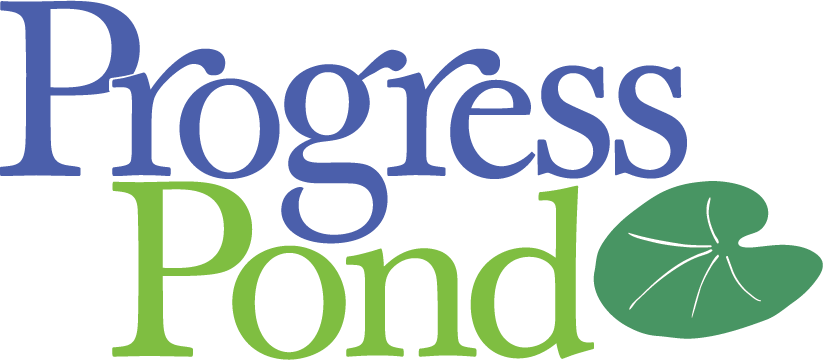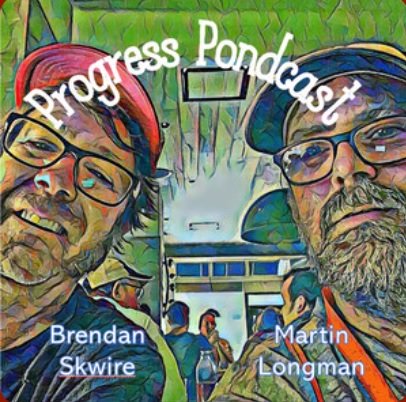This report is a bit alarmist, but they do have a point. Iodine-131 may have a half-life of eight days, but it is not the only radioactive particle invading our food supply. You can see how this is reported here, where the government acknowledges that Cesium-134 and Cesium-137 have been discovered in rather elevated quantities in the Hawaiian milk supply, but then reassures us by talking about the half-life of Iodine-131.
Samples of milk from across the United States are regularly collected and tested by the EPA’s RadNet, a national network of monitoring stations that check air, water, and milk samples for radioactivity.
Cesium 134 (24 picoCuries per liter) and 137 (19 picoCuries per liter), and Iodine 131 (18 picoCuries per liter) were detected and identified in local milk samples taken on April 4, 2011. All are radioactive products that have been emitted by the ongoing Fukushima nuclear meltdown in Japan.
Jeff Lau, a scientist with the Hawaii Department of Health, told Hawai`i News Daily that the amounts of radioactivity found in Hilo milk was far below the level that would necessitate a public response. “Cesiums are marked at a minimum action level of 10,000,” said Lau. “Iodine 131 has an action level of 200. Someone would have to drink 2 liters of milk per day for two years just to reach the response level.”
The good news is that Iodine 131 has a half life of 8 days. According to Lau, the jet stream from Japan takes 5 days to reach the West Coast, and another 8 days or so to reach Hawaii. The amount of radioactive iodine in the environment is reduced by time.
If radioactivity from Fukushima has been found in Hilo milk, it is reasonable to assume that catchment water — used extensively in East Hawaii — might also be contaminated.
According to the EPA, Cesium-137 has a half-life of thirty-years. So, why focus all our attention on Iodine-131?
I’m not sure what the EPA’s standards are for milk. I looked for a while, but I can’t find any standard. The alarmist article linked above claims that the Hawaiian number exceeds by six times the EPA’s Iodine-131 threshold for safety. I couldn’t verify that and, obviously, the Hawaiian Health Department seems unconcerned.
I note that Philadelphia is showing elevated Iodine-131 at three separate locations. I also note that water is in everything we eat and drink, and ingesting radioactive particles is not good for you, regardless of how little of it you are exposed to. We’re poisoning ourselves and our environment. I have to say, I am not thrilled about what the means for my fifteen-month old boy.



Check with your pediatrician to see if he should be taking a dose of non-radioactive iodine as a precaution.
Why not ask about Miso soup & sea vegetables too? They could be equally as effective, if not moreso, along with other nutritional benefits for a little body.
So, why focus all our attention on Iodine-131?
There could be some factors about I-131 that make it especially dangerous in certain situations or maybe it is considered some kind of important benchmark indicator. Why is the “action level” so much lower than the others? I’ve tried reading about this stuff and still don’t get all the fine points.
However, based on the numbers you quote, the measured radiation as a percentage of the “action level” (whatever that means) is much higher for I-131:
Cs-134 24 % 10,000 = .24%
Cs-137 19 % 10,000 = .19%
I-131 18 % 200 = 9.00%
The effects of low exposure to Iodine-131 can be apparent within six months and can have obvious medical consequences that are directly traceable back to their cause. I-131 goes straight to the thyroid, kills thyroid cells causing hypothyroid disease and/or mutates cells into thyroid cancer.
The effects of low exposure to Cesium can take decades and by the time they occur all kinds of other influences can be blamed for the resulting cancers. I-131 can be held directly accountable; Cesium can not. Also, we can actually do something about I-131 exposure. Using iodized salt and taking potassium supplements can help our bodies eliminate the I-131 and minimize the damage it might do. With Cesium there isn’t a damn thing we can do about it.
Thanks. It sounds as though the effects of Cs in smallish doses over time are almost unknowable. I’ve been wondering if the main factor was that I-131 was concentrated vs. Cs which does not appear to be concentrated in the body.
All kinds of questions come to mind. Iodine is a mineral the body needs and so active acquires for the thyroid. Cesium as far as I can tell is not used by the body in any way but it does share traits with potassium. I’m guessing this might also mean that a fair amount of Cesium gets lost by elimination.
Are you familiar with any particular web sources that are good for understanding the different health dangers of these isotopes being released? I find only isolated pieces of the puzzle here and there.
“I’m guessing this might also mean that a fair amount of Cesium gets lost by elimination.”
Unfortunately, no. As you’ve already discovered the body mistakes Cesium for potassium so it accumulates in bone, bone marrow, etc. As for finding web sources, I’m no better at using Google than you are. The only reason I know so much about I-131 off the top of my head is because I have thyroid disease. I searched Cesium and the differences between beta and gamma radiation after news reports of increased radioactive elements hit NC last week.
Last year I had a hefty dose of I-131 as a medical treatment. Being radioactive for a week was… interesting… and made me feel very ill. The treatment didn’t work to my endocrinologist’s satisfaction and she’d like me to do it again; I won’t. I joked with her last week that I could just drink more tap water and get the treatment for free.
As TarheelDem pointed out, my age demographic got far more exposure from the prevailing winds out of Utah than is currently being rained upon us from Tokyo. I’m not saying that it isn’t bad. There just isn’t anything we can do about it except for rejecting the idea that nuclear power is a safe solution to our energy needs.
Iodine-131 has been shown to be associated with thyroid cancer and malfunction. That is why.
Just in general, folks under 50 years old have not been exposed to as much radiation as my generation. Anyone 50-70 years old grew up in an environment containing much more radiation as a result of nuclear testing than what any of the nuclear accidents have released. The “hard rain” that Bob Dylan says was going to fall referred to concerns about Strontium-90 in milk.
The EPA regulations are of amounts released into the air and included deposition in water sources. The FDA most likely regulates radioactive isotopes in milk. The text of regulations, which will include standards, will be in the section of the Code of Federal Regulations related to those topics. Those are on the GSA’s CFR web site.
“Iodine-131 has been shown to be associated with thyroid cancer and malfunction. That is why.”
Sure, but Booman’s question is a comparative one related to why is it more dangerous than Cesium. I think it may be that since the body naturally absorbs Iodine to be processed in the thyroid, it tends to concentrate the isotope there and concentrated it can do more damage. Could it be that Cs isotopes do not get concentrated in any one area and that makes them less dangerous? I don’t see how that would make much difference with gamma radiation, but it might with beta radiation.
For a somewhat historical account of I-131 and public health dangers, the CDC has an interesting read:
http://www.atsdr.cdc.gov/csem/iodine/index.html
Iodine is a necessary nutrient, so is taken up by the body. Cesium is not, so it tends not to concentrate.
Looks to me like selective analysis. Hawaiian teenagers who are active are not unknown to drink 2 litres of milk on a regular basis. And the younger population is always more susceptible to outlaw chemicals, we already found this is out in BPA intakes.
As physicist Michio Kako likes to point out, we all contain radioactive molecules from Chernobyl. We also have breathed molecules of CO2 that Shakespeare exhaled. Getting in a state because the Japan reactor molecules are dispersing is kind of silly. They come nowhere near what was released by the attacks on Hiroshima-Nagasaki or by the innumerable nuclear weapons tests in the US and around the world. To say nothing of medical and industrial radioactive outflows. To say nothing, also, about the chemical outflows from other energy sources and manufacturing processes. The Japan disaster, in the bigger picture, did nothing to make the world less safe for Americans. We need to get over ourselves.
This kind of out-of-proportion hand-wringing hype only obscures the real lessons of Japan’s disaster: that nuclear technology is, as nuclear scientist Alvin Weinberg pointed out 4 decades ago, a Faustian bargain — a deal with the devil. For nuclear power to take up the slack left by abandoning fossil fuels will require thousands of new reactors worldwide. With that goes a thousandfold increase in risk and a commitment to monitor and control enormous quantities of nuclear waste to the end of the human species. And to leave a legacy of death behind for any more worthwhile species that might succeed us.
Hopefully we’ll get over the trivial hysteria over a few extra radioactive molecules in our local environment and start thinking hard about the long-term contract we’re signing that locks us in a prison forever so that we can keep on driving and leaving the lights on and pay no attention to our real responsibilities to our planet and our species.
There’s a difference between particles we breathe and particles we eat though.
I think the trouble is that I don’t believe the gov. is going to do adequate testing.
ingesting radioactive particles is not good for you, regardless of how little of it you are exposed to.
Sorry Boo, but there is no medical evidence that low levels of exposure are bad for you. Effects only begin to show up for exposures larger than 50-60 milli-Sieverts. Below that, some studies suggest that a little radiation may even be good for you! As Jeff Lau says, the Hawaii exposure levels are in the noise.
.
"But I will not let myself be reduced to silence."The standards for radioactive particles in milk are at a level that would be ‘safe’ for an infant to drink for 70 years. That’s pretty low at first blush, but can anyone tell me how the gov’t came upon this knowledge? That would be a seriously interesting story to hear.
Since March 11th, this is the most unreported part of the story. My knowledge of the effects of radioactivity short and long term is very weak to begin with; lack of current reliable information does nothing to reduce anxiety. Sometimes what we don’t know can hurt us. I hope this is not one of those times.